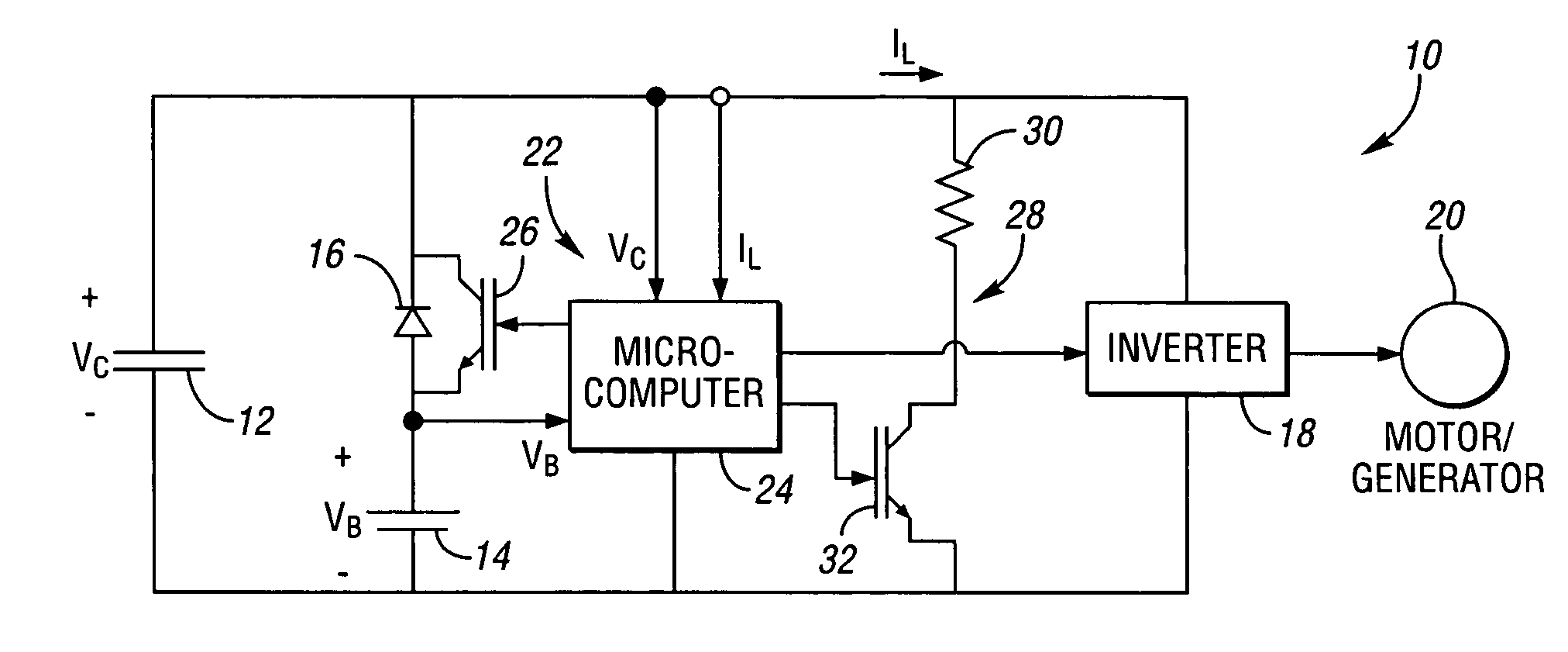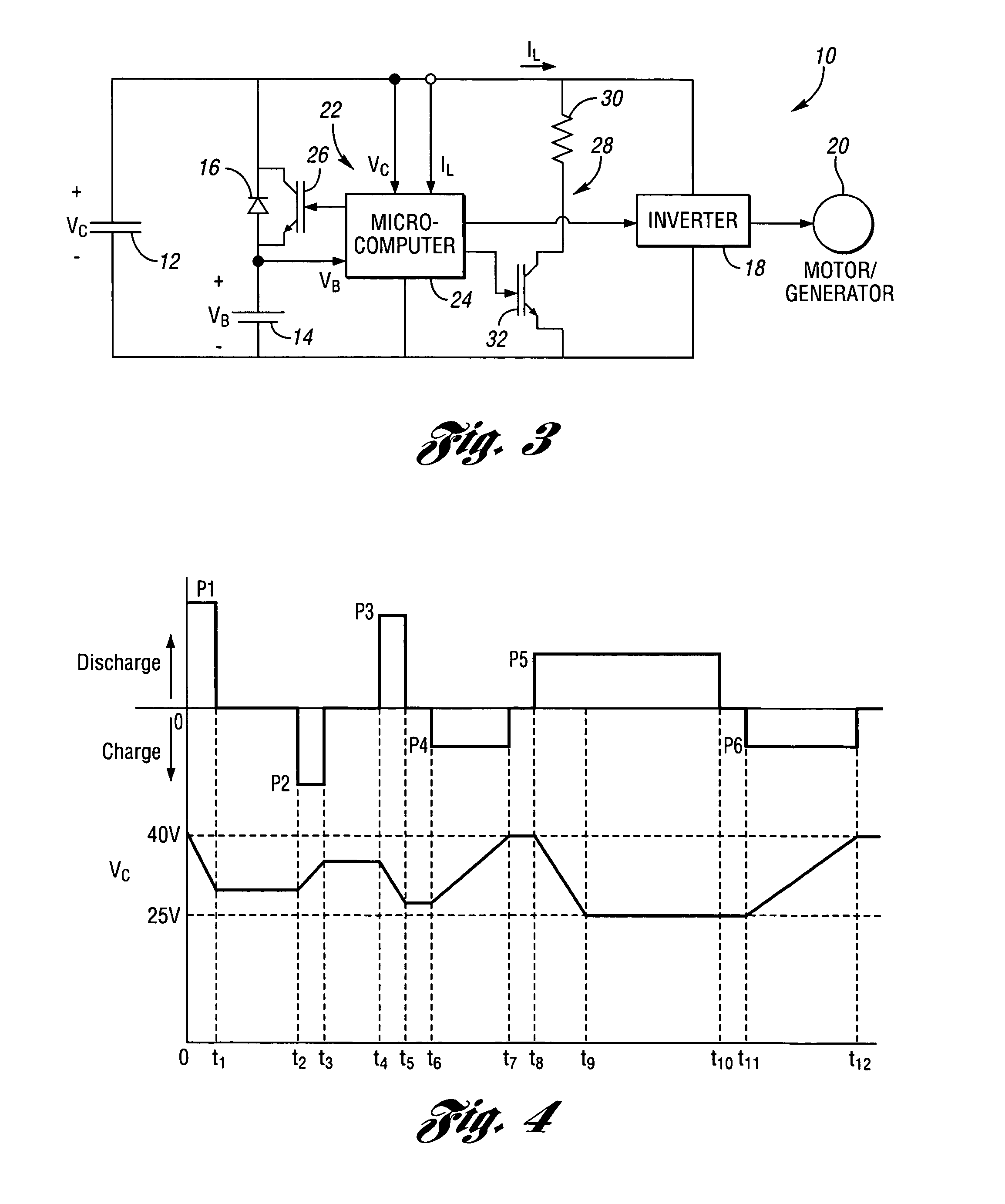Energy storage system with ultracapacitor and switched battery
a technology of energy storage system and switched battery, which is applied in the field of vehicle energy storage system, can solve the problems of affecting battery life, substantially increasing cost, and high switching load current i/sub>l /sub>, and achieves relatively low non-tractive electrical loads, reduce battery cycling, and reduce discharge.
- Summary
- Abstract
- Description
- Claims
- Application Information
AI Technical Summary
Benefits of technology
Problems solved by technology
Method used
Image
Examples
Embodiment Construction
[0024]The following description of the preferred embodiment(s) is merely exemplary in nature and is in no way intended to limit the invention, its application, or uses.
[0025]Referring to the circuit diagram shown in FIG. 3, an exemplary energy storage system10 in accordance with the invention, for use in a hybrid electric vehicle, includes an ultracapacitor 12, and a battery 14 that is electrically coupled in parallel with the ultracapacitor 12 through a series-connected diode 16. For purposes of the invention, the term “ultracapacitor” encompasses electrostatic multiple-layer capacitors (singly or in parallel and / or series combinations), as well as capacitors (single capacitors or parallel and / or series combinations of capacitors) with capacitances above 1 F. It will be appreciated that, when multiple series-connected ultracapacitors are used, the energy storage system preferably includes charge-balancing circuitry (not shown) to prevent against inadvertent overcharging of a given ...
PUM
 Login to View More
Login to View More Abstract
Description
Claims
Application Information
 Login to View More
Login to View More - R&D
- Intellectual Property
- Life Sciences
- Materials
- Tech Scout
- Unparalleled Data Quality
- Higher Quality Content
- 60% Fewer Hallucinations
Browse by: Latest US Patents, China's latest patents, Technical Efficacy Thesaurus, Application Domain, Technology Topic, Popular Technical Reports.
© 2025 PatSnap. All rights reserved.Legal|Privacy policy|Modern Slavery Act Transparency Statement|Sitemap|About US| Contact US: help@patsnap.com



